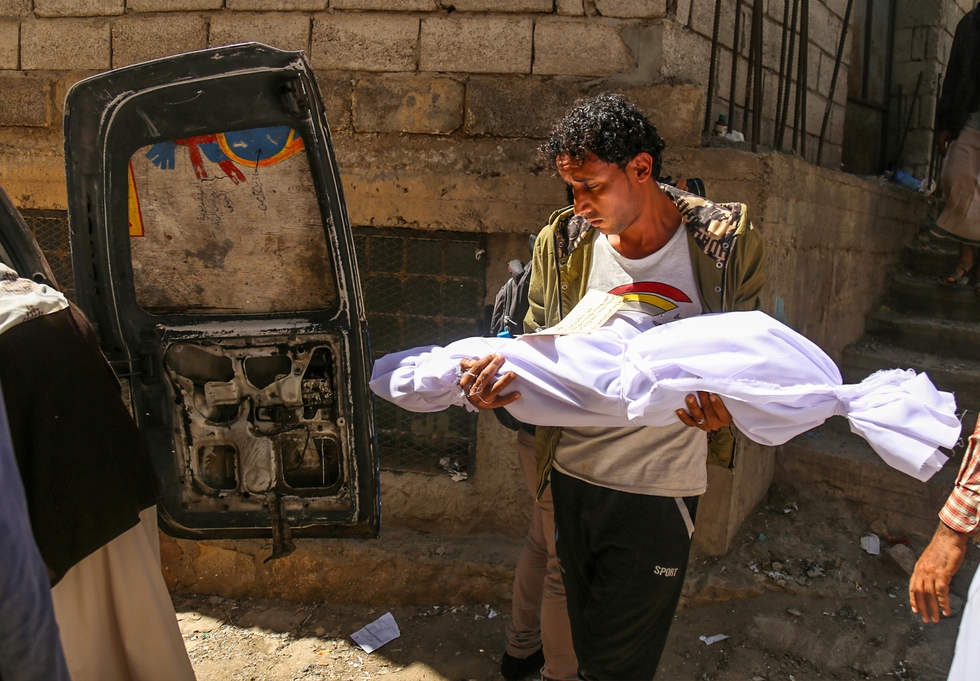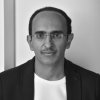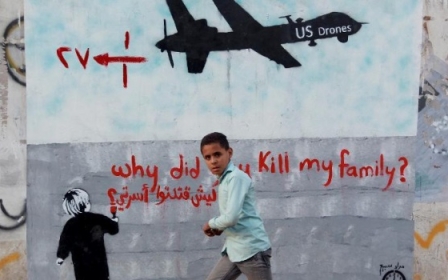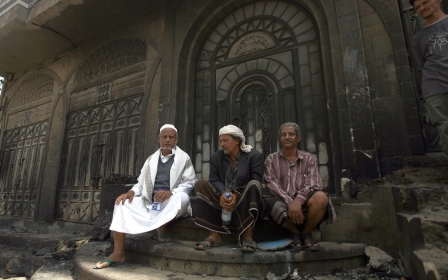Let's not forget the Yemeni voices that oppose Houthi-Saleh forces

On 25 March last year, Saudi Arabia made the fateful announcement that they would be beginning an aerial campaign targeting the Houthi rebel group in Yemen. The operation was to be called "Decisive Storm".
Sanaa experienced heavy bombardment that night. Military bases across the city were pummelled by the Saudi air force.
But Mahmoud, a young activist in Yemen’s second city Aden, picked up his weapon – for the first time in his life – three days earlier. Mahmoud, like many in his neighbourhood, stood in line to join the Southern Resistance. News spread like wildfire that the Houthis were marching on the city.
"Aden was in chaos. Young people untrained and unequipped, preparing to fight a well-trained army," Mahmoud told me.
Houthi militias, backed by Yemeni military units, were approaching the city and soon clashed with the Southern Resistance. The Southern Movement, which had been a peaceful movement for a number of years, was engaged in a violent struggle for the first time.
Given the huge difference in weaponry and military preparation, the result was inevitable. Houthi militiamen – along with army units loyal to their ally, ex-president Ali Abdullah Saleh – swept through the city and took control of the majority of Aden by 24 March.
"When we saw the army firing on our own neighbourhoods, we felt oppressed. Women and children were fleeing their homes, under heavy shelling. I haven’t felt such pain and suffering like I did on that day," said Mahmoud.
The Houthis were expanding across Yemen.
On the same day that Mahmoud describes the Houthis sweeping through his city, Ahmed was preparing to fight them. But he was in Taiz.
Ahmed, an engineering graduate from Taiz University, is a member of Yemen’s Islah Party, and participated in the Arab Spring protests of 2011.
"I never thought I would have to pick up a weapon one day and shoot back. In 2011, I believed that peaceful resistance was the way forward, but the Houthis and Saleh left us with no choice but to defend ourselves," Ahmed told me.
On 24 March the Houthis opened fire on protesters, killing seven people and injuring over eighty. Ahmed, like many other young Taizzis volunteered himself for the fight. He considers that the fight is with Saleh, who Ahmed sees as now using the Houthis.
"Saleh wants to get revenge for 2011. Taiz was the first city to revolt against him," he said.
Much of Taiz’s resistance forces are Islah Party members, but there are also a mixture of others, from Nasserites to Socialists to unaffiliated men. They have a common short-term goal – to push the Houthi and Saleh forces out of Taiz.
In Yemen’s central Marib province, Diab tells a similar story. Except he is a member of Saleh’s GPC party. Yet in December 2014, as the Houthis were pushing to enter Marib, he decided to join the fight against them.
In 2011, it was a very different story. Diab did not participate in the protests, and considered it an attempt to attack Saleh – a man he thought of as a great leader. "We had Saleh’s picture in our living room, and were raised by the ideals and values of the GPC," Diab said.
He now feels that Saleh’s new allies – the Houthis – are a force that seeks to return Yemen back to its former kingdom, prior to 1962. In his eyes, Saleh had now betrayed him and his fellow Yemenis, and handed the military to the Houthis.
The Republican Guards – the strongest units in the military and a force many felt were still loyal to Saleh – aided the Houthis in Marib. The Houthis used military bases to launch attacks on villages, including Diab’s.
But Diab and his fellow Marib tribesmen have managed to slow the Houthis down. In October 2015, with strong support from the Saudi-led coalition, they succeeded in pushing the Houthi militia out of their territory, and took control of their military bases.
Although the Saudi aerial campaign has resulted in the death of many civilians, and caused huge damage to Yemen’s infrastructure, including the destruction of schools and hospitals, Mahmoud, Ahmed and Diab believe that it was the only way to fight what they describe as "Houthi aggression".
Mahmoud says that the Southern Resistance – who finally managed to push out Houthi and Saleh forces in July, would not have managed to do so without the support of the coalition. "The South witnessed a Houthi invasion and an attempt to subjugate its people, but, with the help of the Saudi-led coalition, those days are over," he said.
In Taiz, where Ahmed is still fighting and there seems to be no let-up in the violence, there is a similar sentiment. "If the Saudis didn’t bomb the Yemeni air force, the Houthis would have used jet fighters to throw barrel bombs on Taiz like Bashar al-Assad is doing in Syria," he said.
The city itself is surrounded by the Houthis and Saleh, and they have been laying siege to the 200,000 people left in the city since August. Diab says that it was the duty of Yemen’s Arab neighbours to save Yemenis. He believes that relations between Yemen and the Gulf states will flourish after the war.
The reality on the ground is complex. A simple fight between Saudi Arabia and Yemen it is not. Mahmoud, Ahmed and Diab represent three different groups fighting the Houthi-Saleh alliance. That diversity, and that opposition to the Houthis and Saleh, has been neglected in the coverage of the Yemen conflict.
The reality is that many Yemenis are willing to go to any length to stop the Houthis and Saleh. To them this is a power grab that has totally destroyed Yemen’s post-2011 transitional process, and one that they’re happy to accept any help in confronting.
- Baraa Shiban is a Yemeni human rights activist. He is the Yemen project co-ordinator for the human rights organisation Reprieve.
The views expressed in this article belong to the author and do not necessarily reflect the editorial policy of Middle East Eye.
Photo: A Yemeni man carries the body of a child killed in a mortar shell attack on the country's flashpoint southern city of Taiz, as clashes between fighters from the Popular Resistance Committees and Shia Houthi militia continue on 3 February, 2016 (AFP).
Middle East Eye propose une couverture et une analyse indépendantes et incomparables du Moyen-Orient, de l’Afrique du Nord et d’autres régions du monde. Pour en savoir plus sur la reprise de ce contenu et les frais qui s’appliquent, veuillez remplir ce formulaire [en anglais]. Pour en savoir plus sur MEE, cliquez ici [en anglais].





